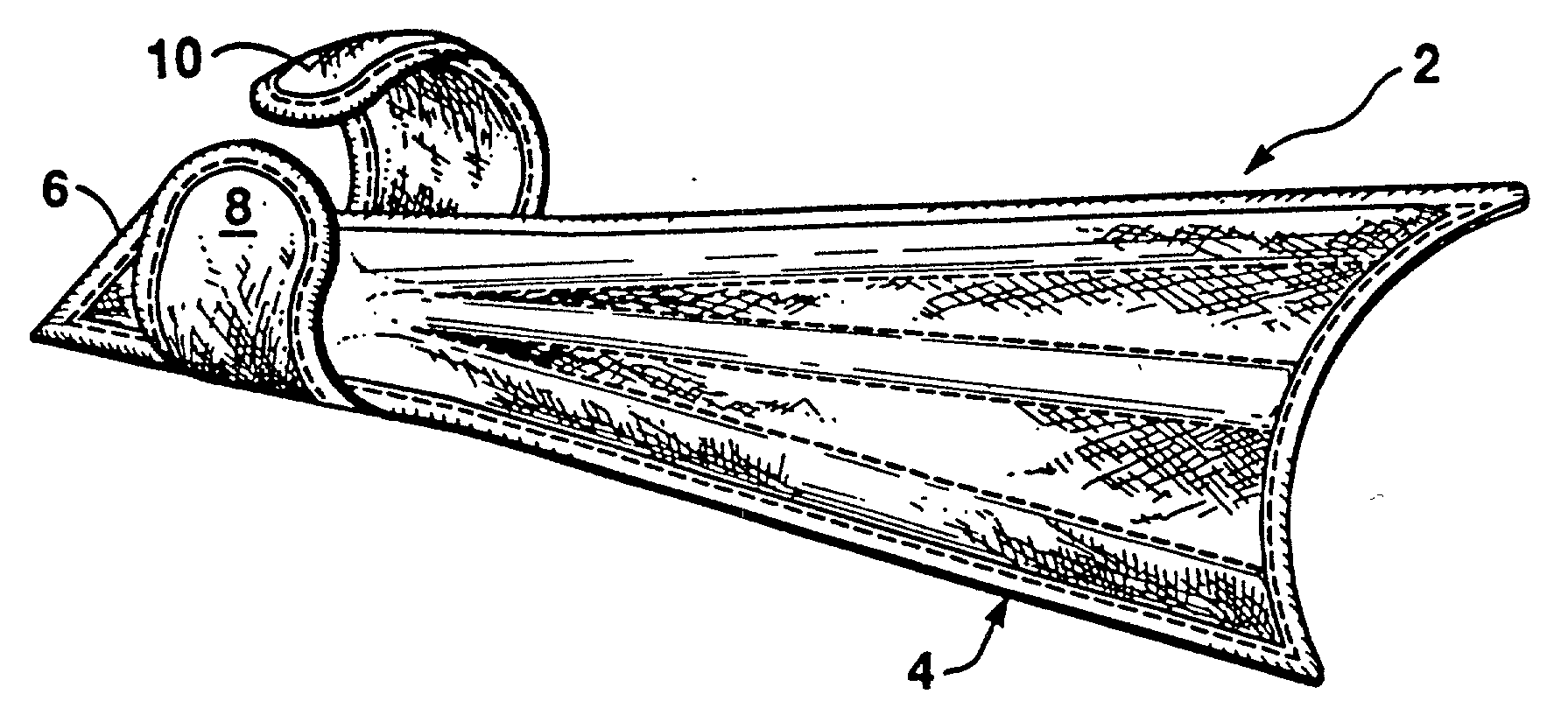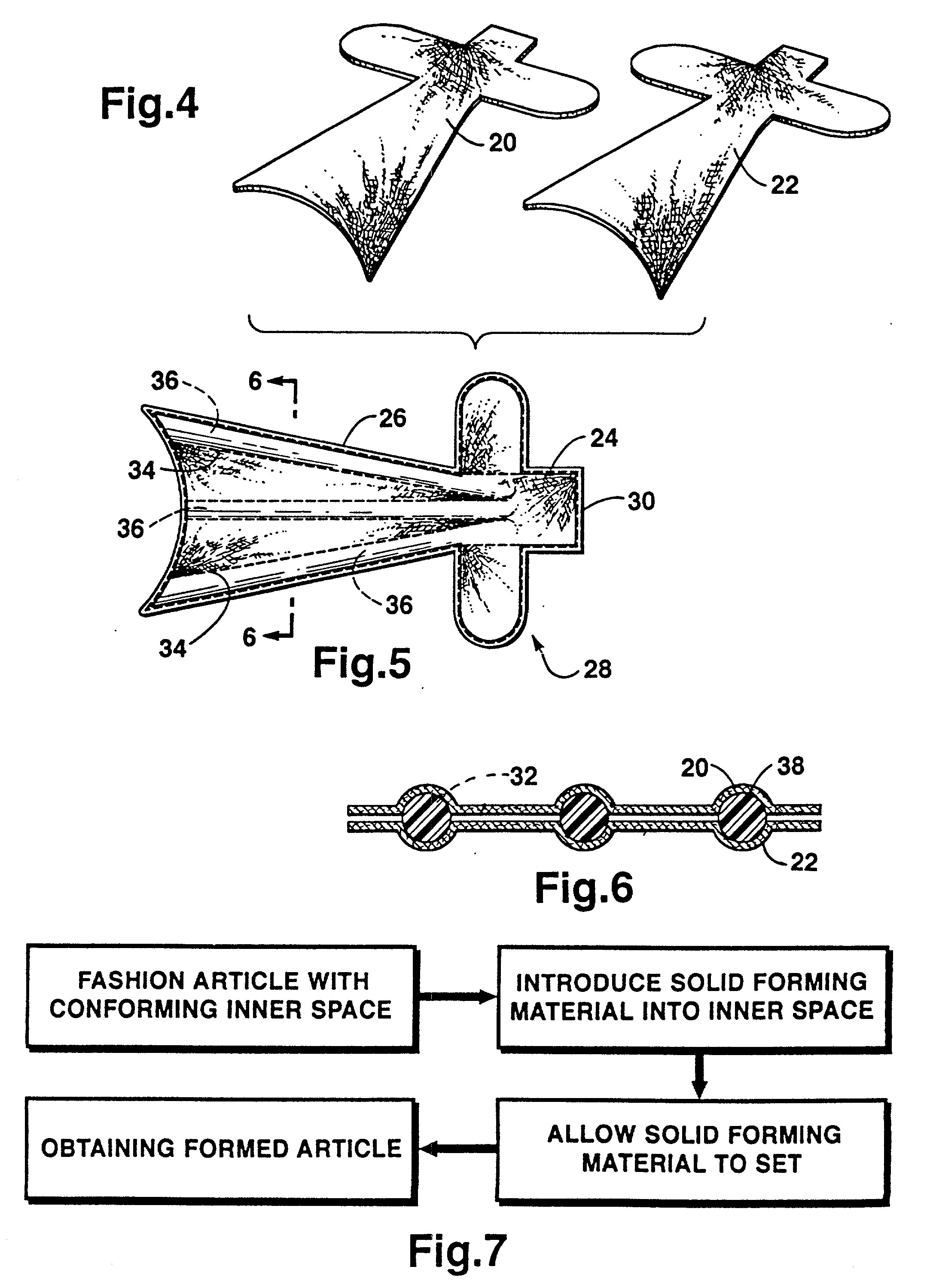Non-mold method of forming objects and articles formed thereby
- Summary
- Abstract
- Description
- Claims
- Application Information
AI Technical Summary
Benefits of technology
Problems solved by technology
Method used
Image
Examples
example
[0065] 1. Two sheets of polyurethane-backed nylon cloth are cut according to the fin pattern shape illustrated in FIGS. 2-4.
[0066] 2. A sheet of nylon mesh is cut according to the same fin pattern shape.
[0067] 3. The nylon mesh is positioned between two sheets of polyurethane-backed nylon cloth with the polyurethane backing on the inside (toward the mesh).
[0068] 4. The three pieces are sewn together to form the shape of the fin and cavities as shown in FIG. 5. The edge cavities are sewn to form a cavity or inner space whose cross section starts at one inch at the foot pocket side of the blade and shrinks to one-half inch at the tip of the blade. The center cavity also narrows from one inch to one-half inch, but it only extends half way from the foot pocket to the end of the blade. The cavities extend to the heel of the foot pocket base to form an opening to pour thermoset polyurethane into. The opening extends a minimum of two inches from where the edge of the final product is to be...
PUM
 Login to View More
Login to View More Abstract
Description
Claims
Application Information
 Login to View More
Login to View More - R&D
- Intellectual Property
- Life Sciences
- Materials
- Tech Scout
- Unparalleled Data Quality
- Higher Quality Content
- 60% Fewer Hallucinations
Browse by: Latest US Patents, China's latest patents, Technical Efficacy Thesaurus, Application Domain, Technology Topic, Popular Technical Reports.
© 2025 PatSnap. All rights reserved.Legal|Privacy policy|Modern Slavery Act Transparency Statement|Sitemap|About US| Contact US: help@patsnap.com



